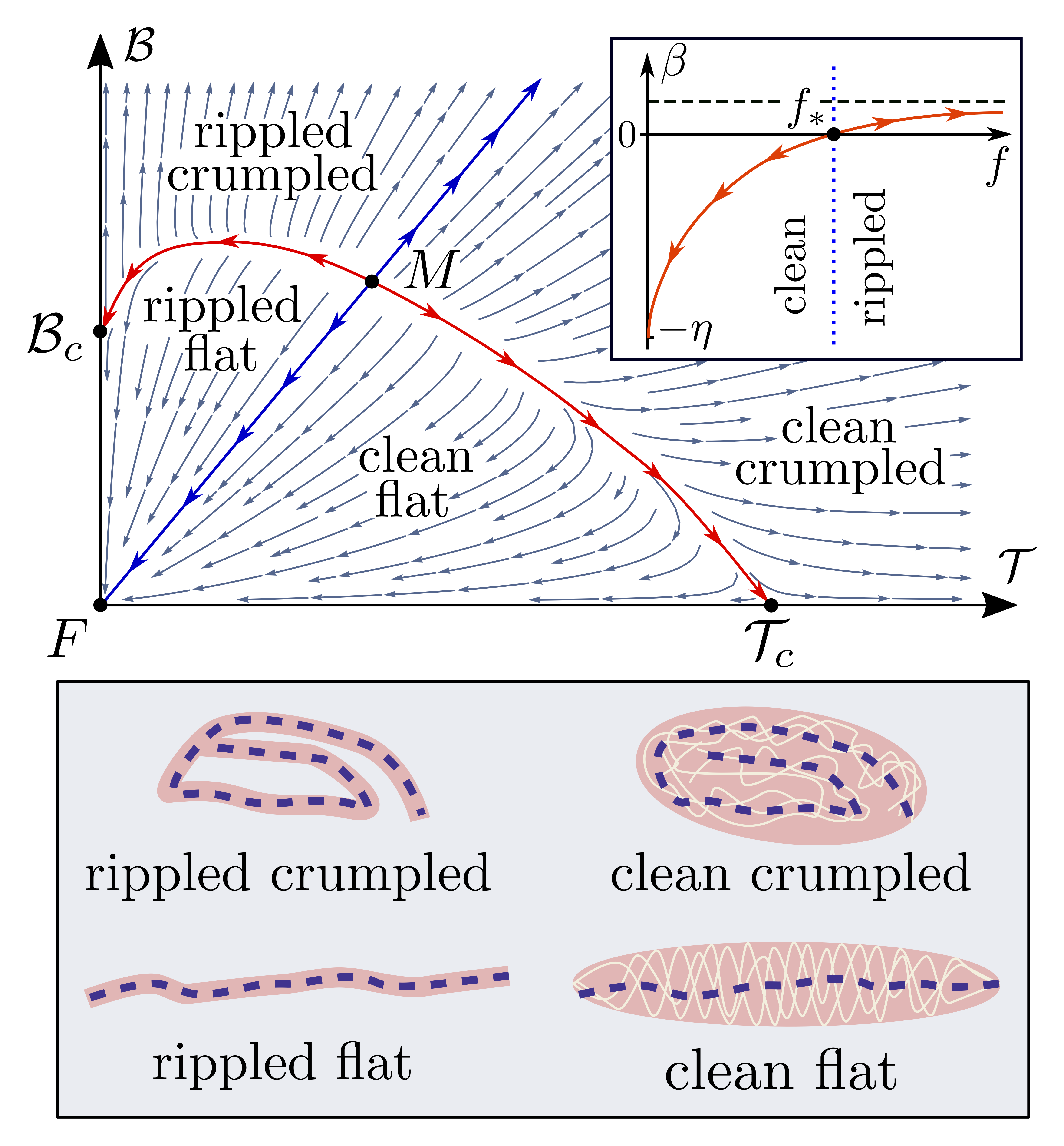Phase diagram of a flexible two-dimensional material
Published in PHYSICAL REVIEW RESEARCH, 2020
Transport and elastic properties of freestanding two-dimensional materials are determined by competition between dynamical and quenched out-of-plane deformations, i.e., between flexural phonons and ripples, respectively. They both tend to crumple the system by overcoming the strong anharmonicity which stabilizes the flat phases. Despite active research, it still remains unclear whether the rippled phase exists in the thermodynamic limit or is destroyed by thermal out-of-plane fluctuations. We demonstrate that a sufficiently strong short-range disorder stabilizes ripples, whereas in the case of a weak disorder the thermal flexural fluctuations dominate in the thermodynamic limit. Therefore the phase diagram of a flexible two-dimensional material with a quenched short-range disorder has four distinct phases. These phases have drastically different elastic and transport properties that are of crucial importance for the emergent field of flexible nanoelectronics.

